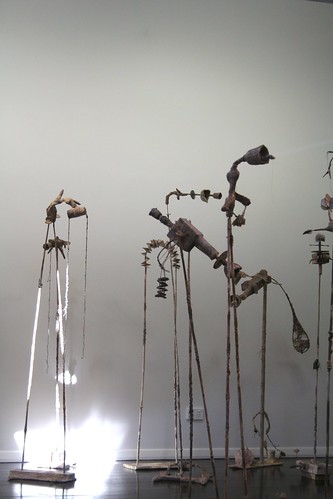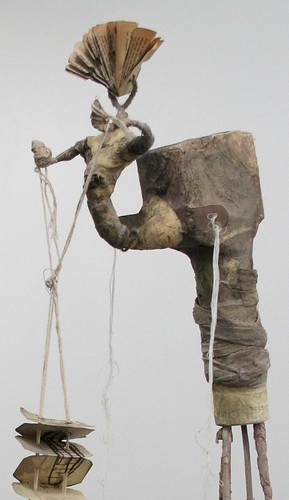The four of us involved – Maiju Altpere-Woodhead, Anna Gianakis, Anita McIntyre and I, Avi Amesbury, started the process by meeting as a group every three to four weeks. We would get together at a café and chat over coffee or a glass of wine – or more often than not, both. Having met one another through the Ceramics Department at the Australian National University we were familiar with each others work. Over the weeks we talked concepts and ideas, our backgrounds, and our materials and processes. What emerged was the framework for the exhibition proposal.
The selection process was rigorous and highly competitive. A web-based procedure of ‘visible reviewing’ was adopted with a panel of international referees reviewing the submissions. The first process was a 400 word submission outlining the intellectual framework of the exhibition proposal. If accepted we were to submit a full proposal of 2,000 words. Our abstract was accepted and we had a month to develop and write our full proposal. None of us had been through such a demanding process before, although we were stimulated and excited by it.
The time between our first get together to consider submitting a proposal and our receiving notification of acceptance was about 8 months. This made it very difficult to apply for funding to help support the exhibition and, in particular, for us as exhibitors to attend. To be part of such an innovative international craft conference and not have access to funding to help us get there has been difficult. Unfortunately, as we all know, ‘quick response grants’ for such occasions are no longer available.
The conference runs from 4-6th July, and the exhibition until 4th August.
We did receive funding from the Janet Holmes à Court Artists' Grant for freight, for which we are very grateful. This has been so helpful in getting our work to Scotland.
To end the evening, an excerpt from the proposal and an image of our work:
“The exhibition tracelines explores the potential of memory, narrative and process as strategies in negotiating concepts of ‘place’ and ‘belonging’. The four Canberra based artists all have migrant origins ranging from several generations of Australian-born ancestry to relatively recent post Eastern-block experience. tracelines draws upon both common and differing aspects of the migrant experience. Consequently, awareness of the role memory plays in art and life binds the four artists, though each bases their individual artistic vocabularies and creative processes on their own unique experience. “

Avi Amesbury
Dreams of home Series, 2007
Porcelain, celadon and clay glazes
Photo: Derek Ross

Anna Gianakis
Café Range, 2007
Porcelain, clear glaze
Photo: Derek Ross

Anita McIntyre
Mapping the Kimberelys, 2007
Stoneware paper clay, transfer print porcelain, coloured slips, terra sigilatta
Photo: Derek Ross

Maiju Altpere-Woodhead
Lending face 1, 2007 (detail)
Porcelain, coloured porcelain, mono-print
Photo: Derek Ross







